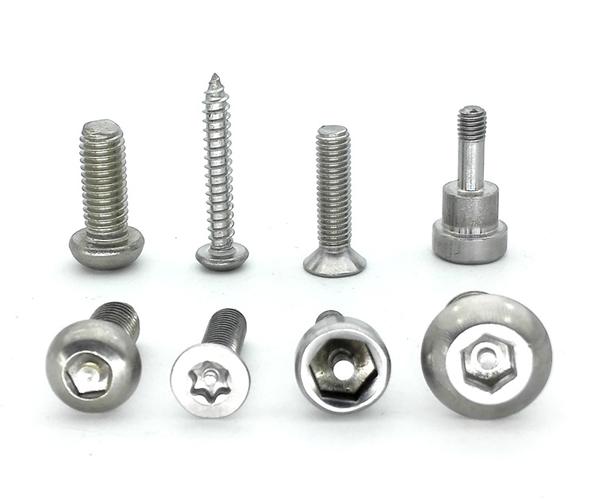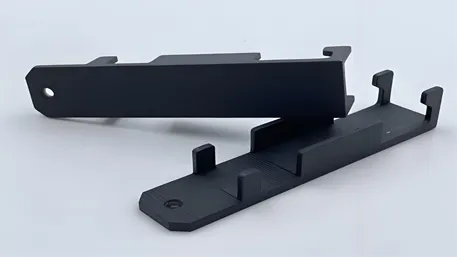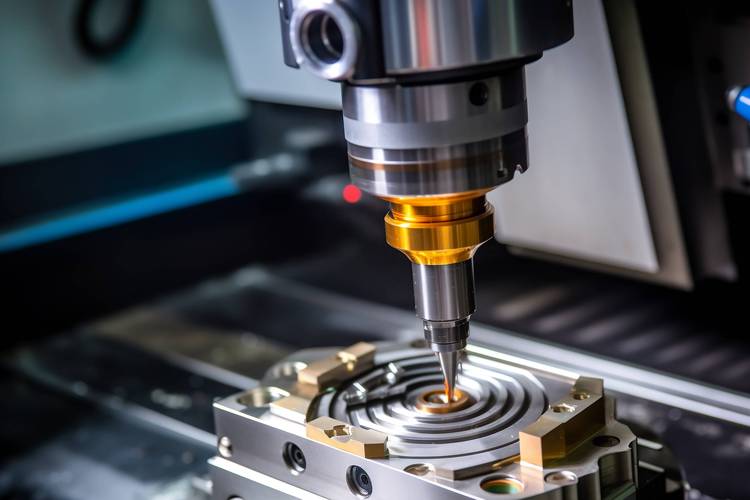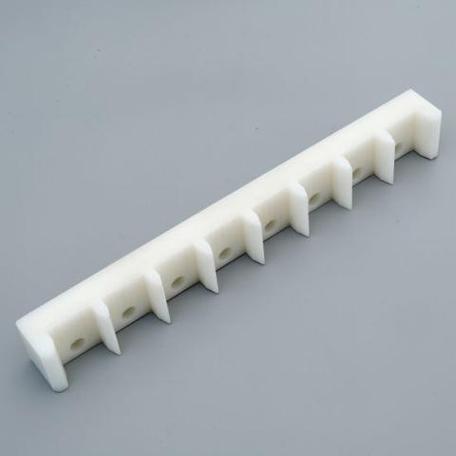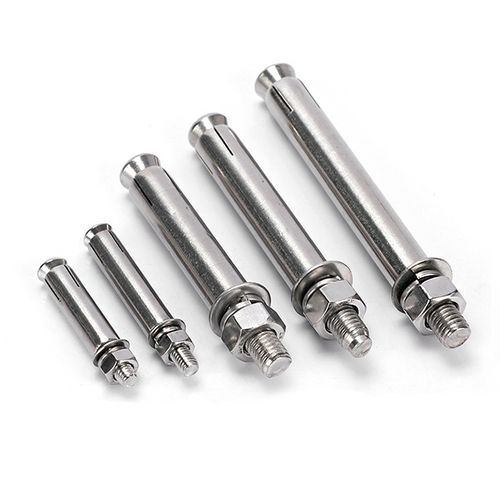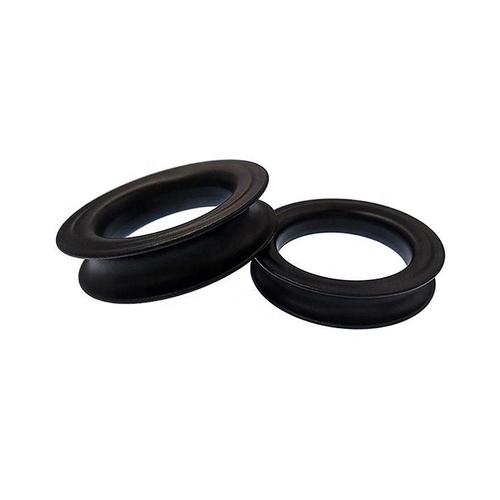Screw machining is a crucial manufacturing process that plays a significant role in various industries. It involves the creation of screws and other threaded components with high precision and accuracy. This process is essential for ensuring the proper functioning and reliability of machinery, equipment, and structures.
1. Types of Screw Machining
Single Spindle Screw Machining
Single spindle screw machining is a fundamental technique that utilizes a single – spindle machine. These machines are highly versatile as they can be equipped with a wide array of cutting tools. This enables the production of precisely machined parts, making it suitable for manufacturing screws with specific thread profiles, diameters, and lengths. The single – spindle setup allows for greater control over the machining process, which is beneficial for producing small – batch or custom – designed screws. For example, in the production of screws for specialized medical devices, where each screw needs to meet exacting standards, single – spindle screw machining can ensure the required precision.
Multi – Spindle Screw Machining
Multi – spindle screw machining, on the other hand, involves machines equipped with multiple spindles. These spindles can be fitted with different tools simultaneously, allowing for multiple cutting operations to occur at the same time. This significantly increases the productivity of the machining process. For instance, in high – volume production environments, such as the manufacturing of standard screws for the construction or automotive industries, multi – spindle screw machines can churn out large quantities of screws in a relatively short time. The ability to perform operations like turning, drilling, and threading simultaneously on different spindles reduces the overall production time and cost.
2. Processable Materials
Metals
- Brass: Brass is a popular choice for screw machining due to its excellent machinability. It has a relatively soft texture compared to some other metals, which allows for easy cutting and shaping. Screws made from brass are often used in applications where corrosion resistance is required, such as in plumbing fixtures or electrical components.
-
- Carbon Steel: Carbon steel is widely used in screw production. It offers a good balance of strength and cost – effectiveness. Low – carbon steel is suitable for general – purpose screws, while high – carbon steel can be heat – treated to achieve higher hardness and strength, making it ideal for screws used in high – stress applications.
-
- Alloy Steel: Alloy steel, with the addition of elements like chromium, molybdenum, and nickel, has enhanced mechanical properties. Screws made from alloy steel are used in demanding applications, such as in the aerospace industry, where high strength and fatigue resistance are crucial.
-
- Stainless Steel: Stainless steel is highly valued for its corrosion – resistant properties. Grades like 304 and 316 are commonly used in screw machining. These screws are used in environments where exposure to moisture, chemicals, or corrosive substances is likely, such as in marine applications or food processing equipment.
- Aluminum and Aircraft Aluminum: Aluminum is lightweight and has good corrosion resistance. It is often used for screws in applications where weight reduction is a priority, such as in the automotive and aerospace industries. Aircraft aluminum, which has even higher strength – to – weight ratios, is specifically designed for use in aircraft components, including screws.
Plastics
- Polyethylene, ABS, Acetyl, Nylon: These plastics are suitable for screw machining in applications where lightweight, non – conductive, or corrosion – resistant screws are needed. For example, nylon screws are often used in electronics and household appliances, while acetyl screws are known for their high strength and wear resistance, making them suitable for mechanical components.
3. Step – by – Step Screw Machining Process
Material Preparation
The process begins with carefully selecting the appropriate material based on the intended application of the screw. Once the material is chosen, it is prepared for machining. For metal materials, this may involve processes such as cutting the raw material into the appropriate length and diameter. If the material has surface imperfections or oxide layers, it may need to be cleaned or degreased to ensure smooth machining. For plastics, the material may need to be dried to remove any moisture, as this can affect the machining process and the quality of the final product.
Machine Setup
The screw – machining machine, whether it is a single – or multi – spindle machine, needs to be set up according to the specifications of the screw to be produced. This includes installing the correct cutting tools, adjusting the spindle speed, and setting the feed rate. The machine’s controls are programmed to ensure that the cutting tools move in the precise path required to create the desired thread profile, diameter, and length of the screw. For example, if a specific thread pitch is required, the machine’s settings are adjusted to achieve the correct linear movement of the cutting tool relative to the rotation of the workpiece.
Machining Operations
- Turning: Turning is a common operation in screw machining. It involves rotating the workpiece while a cutting tool removes material from the outer surface to achieve the desired diameter. This operation is crucial for creating the smooth, cylindrical body of the screw.
- Drilling: Drilling may be necessary to create holes in the screw, such as for through – holes in some types of screws or for creating a pilot hole for subsequent threading operations. The drill bit is carefully selected based on the diameter and depth of the hole required.
- Threading: Threading is the core operation in screw machining. There are several methods for threading, including thread rolling and single – point threading. Thread rolling is a cold – forming process where the thread is formed by rolling a die over the surface of the workpiece. This method is efficient and produces threads with good strength and surface finish. Single – point threading, on the other hand, uses a single – point cutting tool to gradually cut the thread into the workpiece. This method is more suitable for producing screws with non – standard or complex thread profiles.
- Other Operations: Additional operations such as counterboring (enlarging the end of a hole), burnishing (smoothing the surface), and knurling (creating a textured surface for better grip) may also be performed depending on the design requirements of the screw.
Quality Inspection
After the machining operations are complete, the screws undergo a rigorous quality inspection. This includes checking the dimensions of the screw, such as the diameter, length, and thread pitch, using precision measuring tools like calipers, micrometers, and thread gauges. The surface finish of the screw is also inspected for any defects, such as scratches, burrs, or unevenness. In some cases, the screws may also be tested for mechanical properties, such as tensile strength and hardness, especially for applications where the screws will be subjected to high loads.
Finishing and Packaging
Once the screws pass the quality inspection, they may undergo finishing processes. This can include plating the screws with materials like zinc, nickel, or chrome to improve their corrosion resistance and appearance. Some screws may also be painted or coated with other protective finishes. After finishing, the screws are carefully packaged to prevent damage during storage and transportation. Packaging may include using plastic bags, boxes, or specialized containers, and each package is usually labeled with information about the screw’s specifications, such as size, material, and quantity.
4. Customizing Screw Machining
Sharing Requirements
To obtain custom – machined screws, customers first need to share their detailed requirements. This includes providing precise drawings of the screw in formats such as JPG, DXF, or PDF. The drawings should clearly show all the dimensions, including the diameter, length, thread pitch, and any special features like head shape or internal holes. In addition to drawings, customers should also specify the material they want the screw to be made from, the quantity required, and any special performance or environmental requirements. For example, if the screw will be used in a high – temperature environment, this information needs to be communicated so that the appropriate material can be selected.
Engineer Consultation
Once the requirements are received, the manufacturer’s engineering team will review them. They will assess the feasibility of the design and provide advice on any potential issues. For instance, if the specified thread profile is difficult to machine with the chosen material, the engineers may suggest an alternative thread design or material that can achieve the same functionality. They will also provide an estimate of the cost and lead time for the production of the custom screws.
Prototype Production
For complex or high – volume orders, a prototype may be produced first. The prototype is made using the same machining processes and materials as the final product. This allows the customer to test the functionality and fit of the screw. The prototype can be inspected for any design flaws or manufacturing issues, and adjustments can be made to the design or machining process before full – scale production begins.
Bulk Production
After the prototype is approved, the manufacturer proceeds with bulk production. The production process is closely monitored to ensure that each screw meets the quality standards set during the prototype stage. The manufacturer may use quality control measures such as sampling inspection at various stages of production to catch any potential defects early. Once the production is complete, the screws are packaged and shipped to the customer.
5. Application Fields of Screw Machining
Aerospace Industry
In the aerospace industry, screws are used in a wide range of applications. They are crucial for assembling aircraft components, such as in the wings, fuselage, and engines. Screws in this industry need to be of the highest quality, with tight tolerances and excellent mechanical properties. For example, screws used in engine components must be able to withstand high temperatures, vibrations, and extreme mechanical stresses. The aerospace industry often requires custom – machined screws with unique designs to meet the specific needs of different aircraft models.
Automotive Industry
The automotive industry uses a vast number of screws in the manufacturing of vehicles. Screws are used for assembling various parts, including the engine, transmission, chassis, and interior components. In the automotive industry, screws need to be reliable and durable, as they are subjected to constant vibrations, temperature changes, and mechanical loads. For example, screws used in the suspension system must be able to withstand the shocks and stresses of driving on different terrains.
Electronics Industry
In the electronics industry, screws are used to secure components in place within electronic devices such as smartphones, laptops, and tablets. These screws are often small and require high precision in their machining. They need to be made from materials that are non – conductive or have good electrical properties, depending on their application. For example, screws used in the housing of electronic devices may be made from plastic or non – magnetic metals to avoid interfering with the device’s electrical components.
Medical Industry
In the medical field, screws are used in surgical implants, medical devices, and equipment. Screws for surgical implants, such as those used in orthopedic surgeries to hold bones together, must be made from biocompatible materials that are safe for use in the human body. These screws need to have precise dimensions and surface finishes to ensure proper fit and function. In medical equipment, screws are used to assemble and secure components, and they must meet strict hygiene and sterilization requirements.
6. Processing Challenges in Screw Machining
Achieving Tight Tolerances
One of the major challenges in screw machining is achieving tight tolerances, especially for screws used in high – precision applications. The diameter, thread pitch, and other dimensions of the screw need to be extremely accurate. Even a slight deviation in these dimensions can affect the performance of the screw, such as its ability to fit properly or withstand mechanical loads. To overcome this challenge, manufacturers use advanced machining equipment with high – precision controls and regularly calibrate their machines to ensure consistent accuracy.
Machining Hard or Brittle Materials
Machining hard materials like hardened steel or carbide can be difficult as they require specialized cutting tools and higher cutting forces. These materials can cause rapid wear and tear on the cutting tools, which may lead to increased production costs and reduced efficiency. On the other hand, machining brittle materials, such as certain types of plastics or ceramics, can be challenging as they are prone to cracking or chipping during the machining process. Manufacturers need to carefully select the appropriate cutting tools, machining parameters, and cooling methods to address these issues.
Ensuring Consistent Quality in High – Volume Production
In high – volume production, maintaining consistent quality across all screws can be a challenge. As the production process continues over an extended period, factors such as tool wear, machine vibrations, and material variations can affect the quality of the screws. To ensure consistent quality, manufacturers implement strict quality control measures, including regular inspection of the machining process, frequent tool changes to prevent excessive wear, and careful monitoring of the raw materials.
7. Expert Processing Tips for Screw Machining
Optimizing Tool Selection
Selecting the right cutting tools is crucial for efficient and high – quality screw machining. The type of tool, its material, and geometry should be carefully matched to the material being machined and the specific machining operations. For example, when machining hard metals, carbide – tipped cutting tools are often preferred due to their high hardness and wear resistance. The tool’s geometry, such as the rake angle and clearance angle, can also be optimized to improve cutting performance and reduce tool wear.
Controlling Cutting Parameters
Proper control of cutting parameters, such as spindle speed, feed rate, and depth of cut, is essential. These parameters need to be adjusted based on the material being machined and the type of machining operation. For instance, when threading, a slower feed rate may be required to ensure a smooth and accurate thread profile. Monitoring and controlling the cutting temperature is also important, as excessive heat can cause tool wear, affect the surface finish of the screw, and even change the material properties.
Implementing Effective Cooling and Lubrication
Cooling and lubrication play a vital role in screw machining. They help to reduce friction between the cutting tool and the workpiece, which in turn reduces tool wear and improves the surface finish of the screw. Coolants can also help to dissipate heat generated during the machining process, preventing the workpiece and tool from overheating. Different types of coolants and lubricants are available, and the choice depends on the material being machined and the machining operation. For example, water – based coolants are often used for machining metals, while oil – based lubricants may be more suitable for certain plastics.
8. Common Questions About Screw Machining
Q: What is the typical tolerance that can be achieved in screw machining?
A: In modern screw machining, tolerances as tight as ±0.001″ can be achieved, especially with advanced machinery and strict quality control. However, the achievable tolerance may vary depending on the complexity of the screw design, the material being machined, and the type of machining equipment used.
Q: Can screws be machined from non – standard materials?
A: Yes, many manufacturers are capable of machining screws from non – standard materials. However, it may require additional research and testing to determine the best machining methods and tooling for these materials. Specialized cutting tools and adjustments to the machining parameters may be necessary to ensure successful machining.
Q: How long does it take to produce custom – machined screws?
A: The lead time for custom – machined screws depends on several factors, including the complexity of the design, the quantity required, and the availability of materials. For small – batch orders with simple designs, the lead time may be relatively short, perhaps a few days to a week. However, for large – volume orders or complex custom designs, it could take several weeks, especially if a prototype needs to be developed and approved first.
9. Get Screw Machining Services
If you are in need of high – quality screw machining services, look no further. Our company has years of experience in the field, equipped with state – of – the – art single – and multi – spindle screw machines. We can handle a wide range of materials, from common metals like brass and steel to specialized plastics. Whether you need a small batch of custom – designed screws for a prototype or large – volume production for industrial use, we have the capabilities to meet your needs. Our team of experienced engineers will work closely with you from the initial consultation to the final delivery, ensuring that your requirements are met with the highest level of precision and quality. Contact us today to discuss your project and get a quote.
